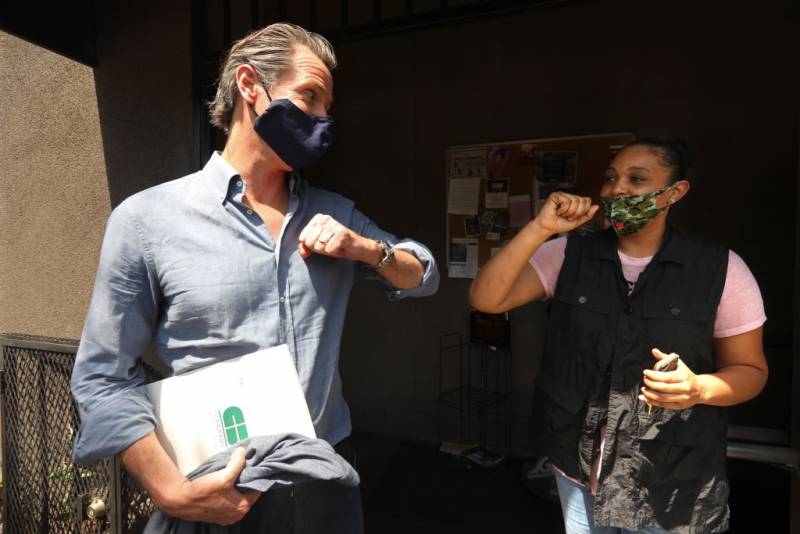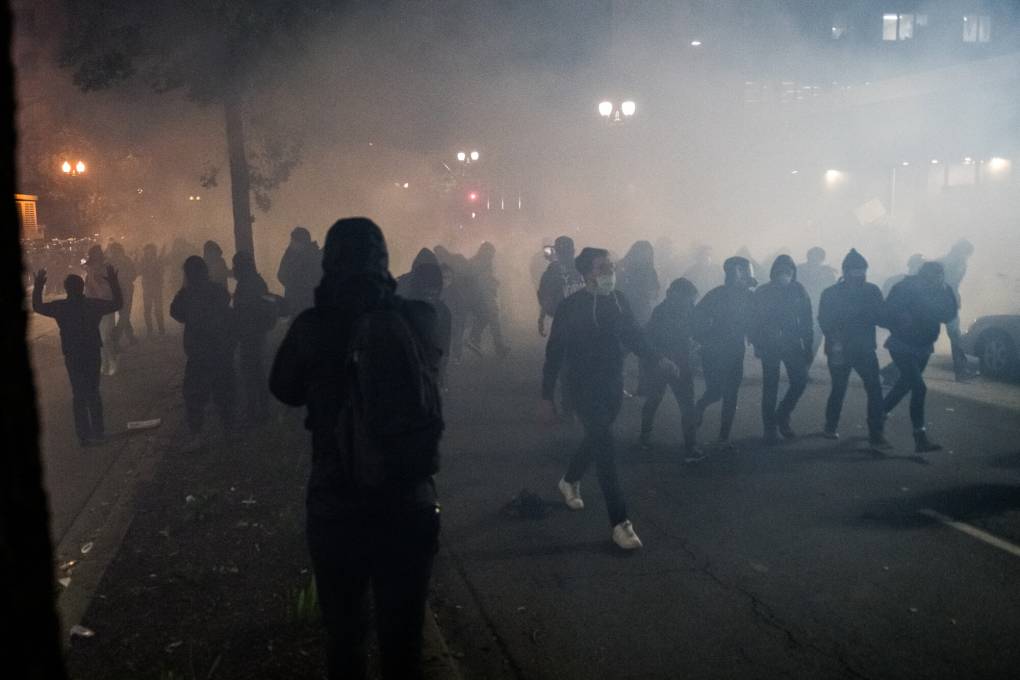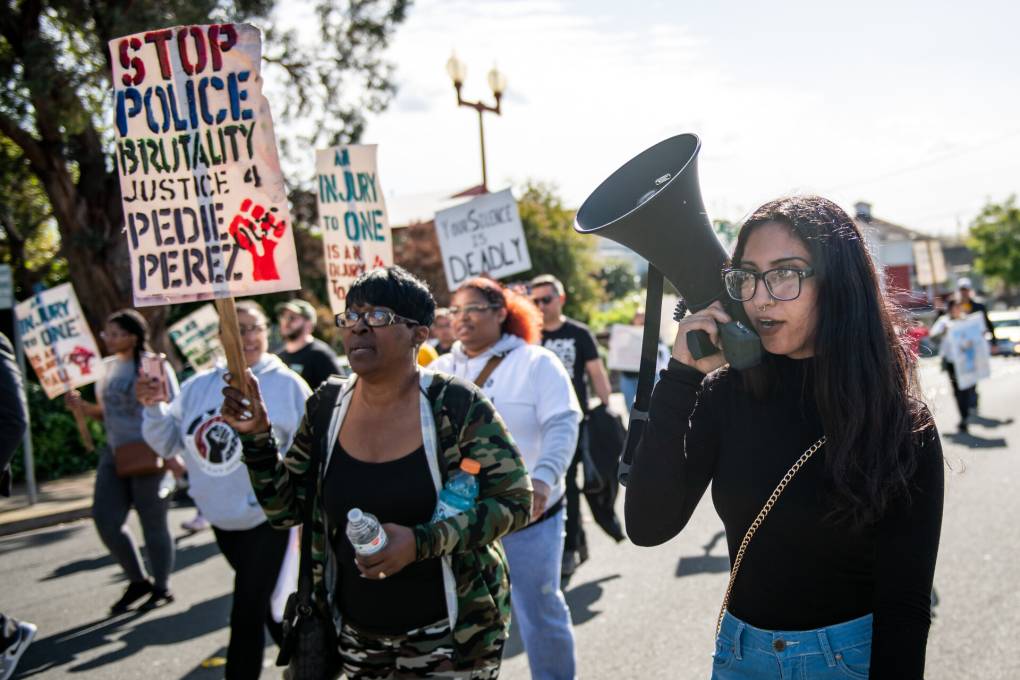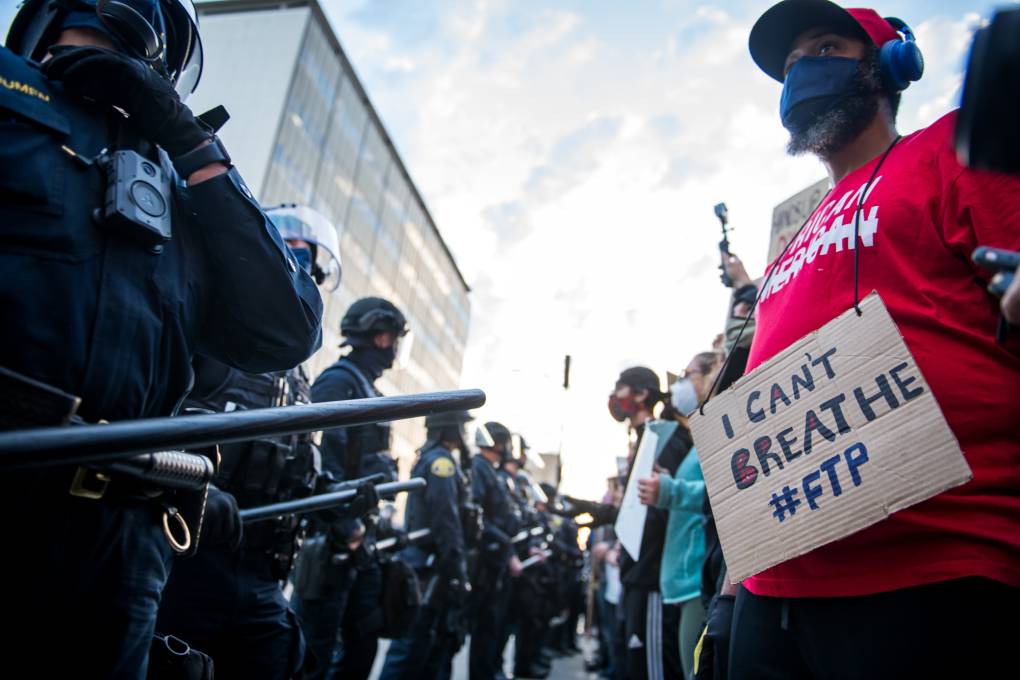California Gov. Gavin Newsom on Friday ordered the state police regulatory agency to stop training officers on how to use a hold that can block the flow of blood to the brain.
Newsom said he is “immediately directing” the state Commission on Peace Officer Standards and Training (POST) to stop teaching the practice in its curriculum, and is supporting proposed legislation to ban the practice in California. The decision on using the hold is currently up to police agencies.
“We train techniques on strangleholds that put people’s lives at risk,” Newsom said during a press conference at the California Museum’s Unity Center in Sacramento. “That has no place any longer in 21st century practices and policing.”
It marked his first action on police use of force following two weeks of protests across the country over the death of George Floyd in Minneapolis. Floyd died on Memorial Day after a police officer knelt on his neck for nearly nine minutes while he was handcuffed and lying face-down on the ground.
Since then, there have been a cascade of calls around the country for police to review their use-of-force policies. The San Diego Police Department and San Diego County Sheriff’s Department are among the agencies that announced they would stop using the carotid hold, named because it applies pressure to the carotid arteries that supply blood to the brain.



